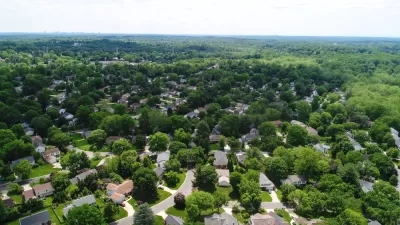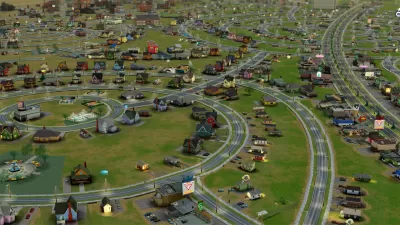The state of Virginia’s decision to limit the use of cul-de-sacs in residential subdivisions(1) will no doubt create a torrent of commentary, both pro and con. In the residential context, cul-de-sacs do have certain advantages: they limit traffic near homes, thus allegedly creating quieter environments for homeowners. So perhaps there is a case for the residential cul-de-sac. But in a commercial setting, the cul-de-sac may be the "right thing in the wrong place--such as a pig in a parlor instead of a barnyard.”(2) In such settings, the cul-de-sac has the same disadvantages as the residential cul-de-sac, with few of the advantages.
The state of Virginia's decision to limit the use of cul-de-sacs in residential subdivisions(1) will no doubt create a torrent of commentary, both pro and con. In the residential context, cul-de-sacs do have certain advantages: they limit traffic near homes, thus allegedly creating quieter environments for homeowners. So perhaps there is a case for the residential cul-de-sac.
But in a commercial setting, the cul-de-sac may be the "right thing in the wrong place--such as a pig in a parlor instead of a barnyard."(2) In such settings, the cul-de-sac has the same disadvantages as the residential cul-de-sac, with few of the advantages.
I work in an office park that is infested with small cul-de-sacs (3) and is cut off from all streets to the east by an interstate highway. As a result, students and employees of my 1500-student law school and of numerous nearby institutions all crowd one street that is the major means of going east or south - which in turn means that during rush hour, this street is so clogged that it can take fifteen or twenty minutes to drive a mile. This example suggests that a disconnected muddle of office-park streets is as inconvenient for drivers as for pedestrians.
None of the traditional rationales for cul-de-sacs justify this sort of layout. Residential cul-de-sacs benefit from low levels of traffic- but a building with hundreds of employees by definition will have lots of traffic nearby, and businesses inhabiting such buildings crave exposure as well as privacy. Denizens of residential cul-de-sacs claim that children can play more easily near their houses - but there are no children playing near most office parks.
The answer to this problem is simple: streets that are lined with offices instead of houses should be on a grid. Period.

Maui's Vacation Rental Debate Turns Ugly
Verbal attacks, misinformation campaigns and fistfights plague a high-stakes debate to convert thousands of vacation rentals into long-term housing.

Planetizen Federal Action Tracker
A weekly monitor of how Trump’s orders and actions are impacting planners and planning in America.

San Francisco Suspends Traffic Calming Amidst Record Deaths
Citing “a challenging fiscal landscape,” the city will cease the program on the heels of 42 traffic deaths, including 24 pedestrians.

Defunct Pittsburgh Power Plant to Become Residential Tower
A decommissioned steam heat plant will be redeveloped into almost 100 affordable housing units.

Trump Prompts Restructuring of Transportation Research Board in “Unprecedented Overreach”
The TRB has eliminated more than half of its committees including those focused on climate, equity, and cities.

Amtrak Rolls Out New Orleans to Alabama “Mardi Gras” Train
The new service will operate morning and evening departures between Mobile and New Orleans.
Urban Design for Planners 1: Software Tools
This six-course series explores essential urban design concepts using open source software and equips planners with the tools they need to participate fully in the urban design process.
Planning for Universal Design
Learn the tools for implementing Universal Design in planning regulations.
Heyer Gruel & Associates PA
JM Goldson LLC
Custer County Colorado
City of Camden Redevelopment Agency
City of Astoria
Transportation Research & Education Center (TREC) at Portland State University
Jefferson Parish Government
Camden Redevelopment Agency
City of Claremont





























